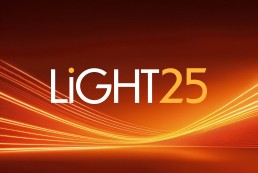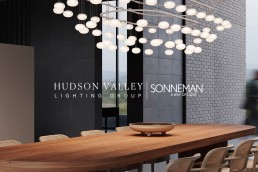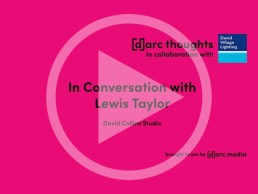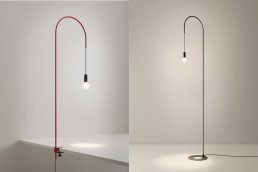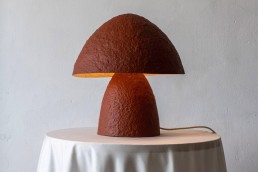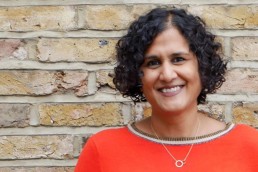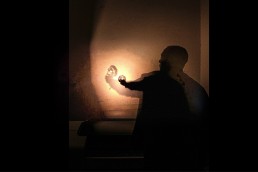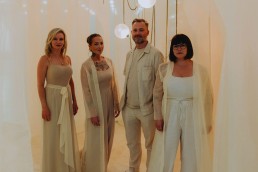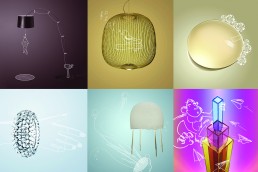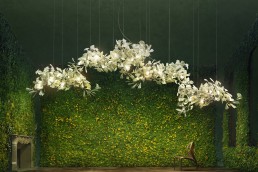LiGHT 25 returns with major industry showcase
(UK) - Registration is now open for LiGHT 25, the UK’s only trade show dedicated exclusively to high-end lighting specification. The event will take place at London’s Business Design Centre on 19–20 November, bringing together more than 200 premium lighting brands and thousands of design professionals.
This year’s exhibition will highlight the latest innovations in architectural, decorative and technical lighting, alongside a packed programme of talks, installations and networking opportunities. The popular [d]arc thoughts series returns in collaboration with Lutron, offering two full days of free panel discussions, presentations and industry insights from some of the most influential figures in lighting design.
A major feature of the show will be Re:Vision, a sensory installation created by the renowned practice Speirs Major Light Architecture and powered by formalighting. Following the success of last year’s Intra-spectrum installation, it promises to be one of the most talked-about experiences of the exhibition.
Beyond the showcase itself, visitors can look forward to a host of networking opportunities, from informal drinks on the evening of 19 November to a complimentary LiGHT Lunch on 20 November. The purpose-built LiGHT WORK Lounge will also provide a calm, dedicated space for conversations and collaboration, complete with free coffee, Wi-Fi and inspiration.
Coinciding with the announcement, LiGHT 25 has unveiled a refreshed brand identity and new-look website. The site offers detailed exhibitor listings, essential visitor information and exclusive pre-show content to help attendees prepare for their visit.
Early registration is encouraged, not only to secure a free ticket but also to ensure attendees are among the first to hear updates on the speaker line-up and special features. Tickets are free but must be reserved in advance.
Louis Pulsen – New FJ Elements collection
(Denmark) – Danish luxury lighting brand announces the introduction of the Finn Juhl lamp as part of the FJ Elements collection – an archival collection of lights by renowned architect Finn Juhl.
Inspired by art and the abstract, the collection consists of a pendant and a table lamp available in three neutrals and the original two-toned grey. Characterised by its rotating shade, this feature allows the light direction to adjust in multiple ways, ensuring glare-free illumination. The design is enhanced by the upper shade, which opens up to provide a gentle upward light from the housing for ambience.
Hudson Valley Lighting Group acquires Sonneman
(USA) – Hudson Valley Lighting Group (HVLG) has acquired modern lighting atelier Sonneman – A Way of Light.
Founded in 2003 by renowned lighting designer Robert Sonneman, the brand specialises in minimalist and technical lighting solutions, with a focus on both functionality and aesthetics.
The acquisition will expand HVLG’s product offering, particularly in the area of configurable, high-performance LED lighting. The move is expected to increase the range of lighting solutions available to designers and provide greater flexibility for projects that span both residential and commercial applications.
The acquisition also marks a return to the brand for HVLG’s Founder and Chief Executive Officer, David Littman, who was previously a co-owner of Sonneman until 2018.
Commenting on the news, Litterman says: “Sonneman represents the best of what modern lighting can be - intelligent, artistic, and purposefully designed. Bringing this brand back into the HVLG family is both a strategic move and a personal milestone. It’s an opportunity to build on a legacy of innovation and to deliver even more value to our customers."
In Conversation With... Lewis Taylor
https://vimeo.com/1092112781?share=copy#t=0
Perhaps best known for its signature restaurant and bar projects in London, David Collins Studio delivers industry-leading interior architecture and design within the hospitality sector. Celebrating its 40th year in business this year, [d]arc media editor, Sarah Cullen sits down with Design Director Lewis Taylor to reflect on the studio’s story so far and how the design industry has grown in that time.
Zafferano - Filo
(Italy) - Due to be available this August, Filo is a lighting collection by Federico de Majo for Zafferano, comprising sconces, floor lamps, and table lamps available with either a base or clamp. Designed with a focus on simplicity and versatility, the collection features a painted metal structure in white, red, or black, supporting an exposed E27 bulb.
A distinctive element of the design is the rotatable upper section, which pivots around its vertical axis to offer adjustable light direction. The minimalist, curved silhouette introduces a graphic quality, offering both visual interest and functionality.
Suitable for a range of interiors, Filo is intended to serve as both a practical lighting solution and a decorative element.
Crea-Re Studio - Boletus desk lamp
(Spain) - The Barcelona studio that bridges art and design has unveiled a new lamp, Boletus, a modern desk lamp that merges organic inspiration with functional design.
Shaped after the “Bolets” mushroom, the lamp features a wide, rounded lamp shade and a grounded base, offering both visual impact and soft, focused illumination. Crafted by hand with a rustic, porous surface, this large table lamp reflects light and illuminates the area beneath it well, making it ideal for writing, reading or creating a calm atmosphere.
Nishi Shah to leave LDI after 29 years
(UK) - After nearly three decades at Lighting Design International (LDI), Design Director Nishi Shah is stepping down, marking the end of a remarkable career that has helped shape the landscape of architectural lighting design.
Shah joined LDI in 1996, shortly after completing her MSc in Light and Lighting at The Bartlett, UCL, following an earlier degree in Architectural Engineering from the University of Leeds. Her initial career in structural engineering soon gave way to a passion for lighting, a decision that would lead to an influential and lasting impact on the industry.
Over 29 years, Shah has led the design and delivery of some of the most prestigious lighting schemes in the world. Her portfolio includes luxury hotels and resorts across the UK and internationally, landmark office spaces in London, and renowned residential projects such as Ham Yard Hotel, Heckfield Place, Rivercourt, and One Hyde Park.
Colleagues at LDI recall Shah as a dedicated mentor and creative leader who has played a pivotal role in nurturing young talent and shaping the company’s ethos and growth. Joining as a graduate, she has since helped steer the studio to become one of the most respected lighting design practices globally.
Reflecting on her departure, Shah comments: “I owe everyone at LDI past and present, especially Sally [Storey, Founding Director], who I owe so much, it comes with mixed feelings and some trepidation, but I am stepping into the next chapter in my life. I have some fantastic memories which I will hold close to my heart. Thank you!”
www.lightingdesigninternational.com
Lodes – Map
(Italy) – Following its preview at Euroluce in April, Lodes modular lighting system, Map, is now avabilble to the market.
Developed in partnership with Berlin-based studio Geckler Michels, Map strikes a balance between aesthetics with advanced lighting performance. The design's visual element is a fabric tape, stretched between various modules, which powers the entire system and offers multiple compositional options. Like a map that reconfigures space and constellations, Map enables free positioning of lights, creating rhythms and reanimations for any environment.
Ideal for spaces with a single power source, Map offers a solution for ceiling and wall applications, enabling customisable configurations that go beyond traditional track lighting or integrated LED strip systems. The system's versatility makes it suitable for environments with architectural constraints, such as low ceilings or the lack of central lighting points, ensuring optimal light distribution without major structural alterations.
The ribbon, available in an eight-metre reel and five centimetres in height, is stretched between various lighting points, providing continuous power even without additional ceiling or wall power sources. Each module, measuring 130mm in diameter and 63mm in height, features a PMMA lens offered in multiple options to meet different lighting needs, from directional illumination to diffused ambient effects. Once the lens is fitted, the module is magnetically sealed for a seamless finish.
Reflecting on the new collaboration, Lodes Managing Director Massimiliano Tosetto comments: “Map was conceived to meet the need for a decorative electrified track, offering lighting designers unprecedented design flexibility. Whether for residential spaces or commercial projects, Map provides a bespoke solution that empowers designers to create the ideal configuration for their needs, defining the space through a distinctive visual language.
Prolicht unveil new brand positioning
(Austria) – Prolicht has announced a strategic shift in its global brand positioning, unveiling the tagline “Designed to Create”, signalling a broader focus on empowering architects and designers.
Prolicht’s new messaging seeks to redefine its role within the creative process. According to the company, the change reflects a long-standing ethos that prioritises design freedom and user-driven solutions.
Walter Norz, founder and CEO of Prolicht, explained that the rebrand is not a departure from the company’s roots but a refinement of its core philosophy. “It wasn’t a sudden shift. It was more like the sharpening of something that had been there all along. We’ve always worked closely with creative professionals – architects, lighting designers, planners. And over the years, we’ve realised that what they value most isn’t the product itself, it’s what the product enables them to do. That was a big insight. Our role isn’t to steal the spotlight. It’s to give others the freedom to design spaces exactly how they envision them.”
The statement “Designed to Create” shows a personal and professional commitment from the company’s leadership. After hearing creative professionals’ frustrations about having to compromise on timing, customisation, or quality, Prolicht wants to clarify that its purpose as a company is to support bold ideas and reject limitations.
Through this brand evolution, Prolicht aims to reposition itself not as the star of a space but as a partner in the creative journey. Norz adds: “We hope we can make those who are willing to challenge the brief, who look at an empty space and see its potential, feel seen. I hope they hear an invitation to explore and to question. Because in the end, new doesn’t just happen. New is created, and people who believe that, that’s who we’re here for.”
Larose Guyon marks 10 years of artisanal lighting
(Canada) - Canadian design studio, Larose Guyon, celebrates 10 years of creating its handcrafted lighting pieces. Based in Verchères, Quebec, the studio continues to refine its material-driven approach to design.
Founded by Audrée Larose and Félix Guyon, the studio has gained international recognition for lighting that bridges art and craftsmanship. Every piece is handmade in their atelier, shaped by a commitment to slow design and storytelling through form and material.
In line with this milestone, Larose Guyon has been featured in the latest issue of darc’s 3d directory with its sculptural piece Saule highlighted in the product showcase. The coverage reflects growing industry interest in the studio’s evolving design language and its emphasis on texture, warmth and authenticity.
In May, the studio also collected numerous accolades with its immersive booth experience during ICFF in New York, which aimed to reflect the studio’s design philosophy through material, light, and texture. The installation featured three of the studio’s signature lighting pieces, alongside a live demonstration from a master artisan, offering visitors a glimpse into the handcrafting process that happens in the Verchères atelier.
The installation earned four awards, including Best of Show, ICFF Editorial Award for Exhibit Design, Best Booth Design, and Best Lighting from NKBA Manhattan.
Larose Guyon’s ongoing exploration of design that prioritises both aesthetic and emotional resonance. Their commitment to quality, sustainability, and artistic integrity positions the studio as a notable voice in contemporary design.
Foscarini Marks Two Years of “What’s in a Lamp?
(Italy) - Italian lighting brand Foscarini is marking the second anniversary of What’s in a Lamp?, an ongoing project that explores the intersection of lighting and visual art. Launched in 2022, the initiative invites international artists and designers to reinterpret Foscarini’s heritage designs through a variety of creative disciplines.
The project was initially unveiled during Milan Design Week and has since been exhibited in Copenhagen during 3 Days of Design. To date, it includes work by 17 artists from across the globe, each contributing a unique visual response to one of Foscarini’s lighting designs.
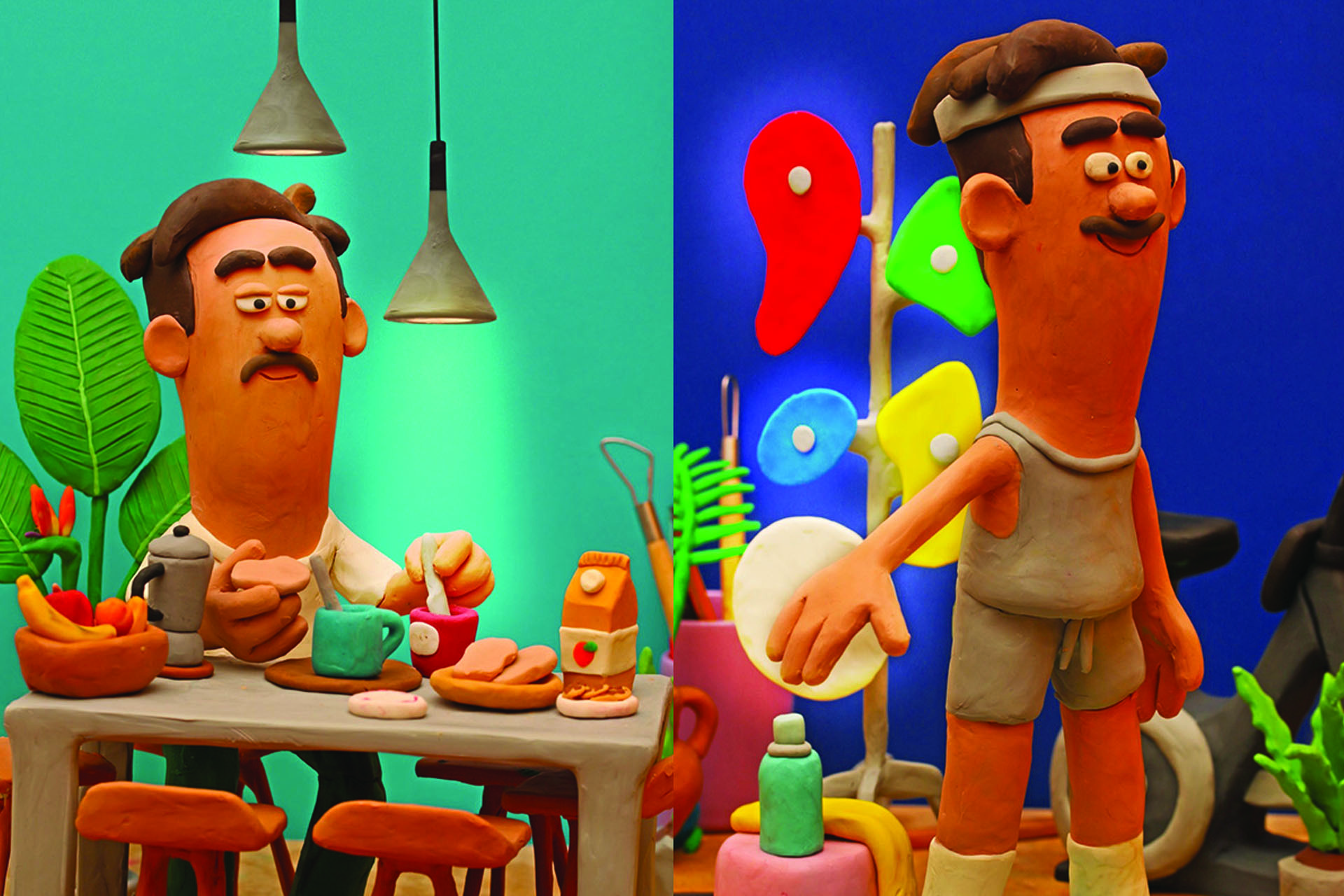
Participating artists include Luca Font, Noma Bar, Oscar Pettersson, Federico Babina, Maja Wrońska, Kevin Lucbert, Alessandra Bruni, Luccico, Stefano Colferai, Fausto Gilberti, Lee Wagstaff, Francesca Gastone, Antje Damm, Mattia Riami, Bennet Pimpinella, Giona Maiarelli and Jim Stoten. Their interpretations span a range of media and styles, reflecting the diverse ways light can be understood and expressed beyond its functional purpose.
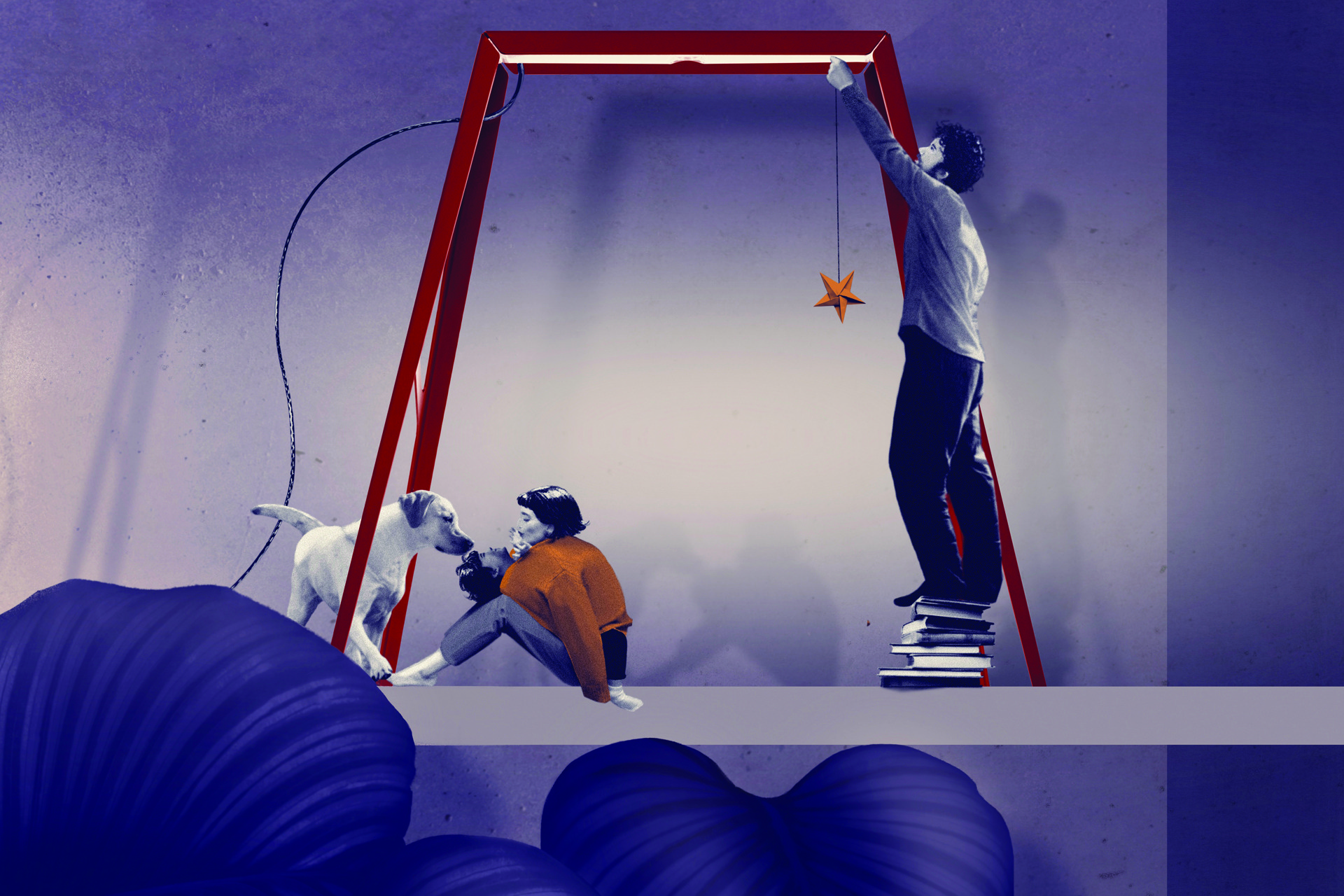
According to Foscarini, the project is intended as an evolving platform to explore the multiple identities and potentials of lighting objects. Each collaboration adds a new layer to the narrative, using light as a conceptual and visual starting point.
A full archive of the project’s contributions to date is available online, and new collaborations are expected to be added in the future as the brand continues to develop the initiative.
For more information and to view the full collection of artist works, visit www.foscarini.com/whats-in-a-lamp
darc dialogues: Andrea Braescu
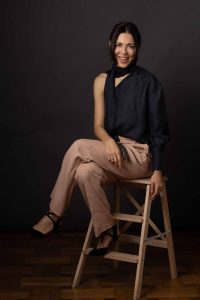 “I know I’ve succeeded when my work evokes the joy and serenity that being in nature brings.”
“I know I’ve succeeded when my work evokes the joy and serenity that being in nature brings.”
Meet Andrea Braescu, an award-winning interior artist, whose handmade porcelain light sculpture blends emotional depth with functionality. Based in Romania, Braescu’s work channels the beauty and calmness of nature, turning interiors into peaceful sanctuaries. Braescu primarily works with fine bone china, a ceramic material valued for its translucency and durability. When lit, the delicate, handcrafted components such as petals and leaves, produce a soft, atmospheric glow. One of her notable works, Grinko, features 700 individually crafted porcelain leaves suspended in a flexible arrangement, resulting in a sculptural installation that blends organic forms with architectural structure.
In a new Q&A series called darc dialogues, Braescu shares insights into her journey, discusses her design influencers, her connection with nature, and her journey with lighting design.
When was your first interaction with lighting and what was it about that experience that led you to your career now?
I’ve always felt a pull towards light and how it shapes our mood. My first real interaction came when I was still a student. I remember seeing the translucency of porcelain for the first time, how it could hold light yet look so delicate. It was magical for me and that moment stayed with me. It made me realise I wanted to bring the serenity and spirit of nature indoors through light and form.
You’ve described your work as capturing the essence of nature – what drew you to nature as your primary source of inspiration?
Nature has always felt like the purest source of harmony. Growing up, I would spend hours just observing the veins of a leaf or the way sunlight moves through branches. Nature’s quiet perfection inspires me endlessly. My work is my way of bringing that same calm and wonder into the spaces we live in.
Is there a particular landscape, season, or natural element that consistently informs your work?
Leaves are a constant for me. They’re such a perfect example of nature’s balance between chaos and order. I’m drawn to patterns like dappled light through trees or the gentle movement of water. Spring holds a special place in my heart because it’s full of renewal and quiet energy.
How do you translate such an organic, intangible feeling into a medium like porcelain?
It always begins with observation and sketching moments that catch my eye. Then comes the hands-on part. Each porcelain leaf or petal is shaped by hand. There’s a beauty in allowing the material’s little imperfections to stay just like in nature. When light passes through the porcelain, it reveals the softness and movement, I want people to feel.
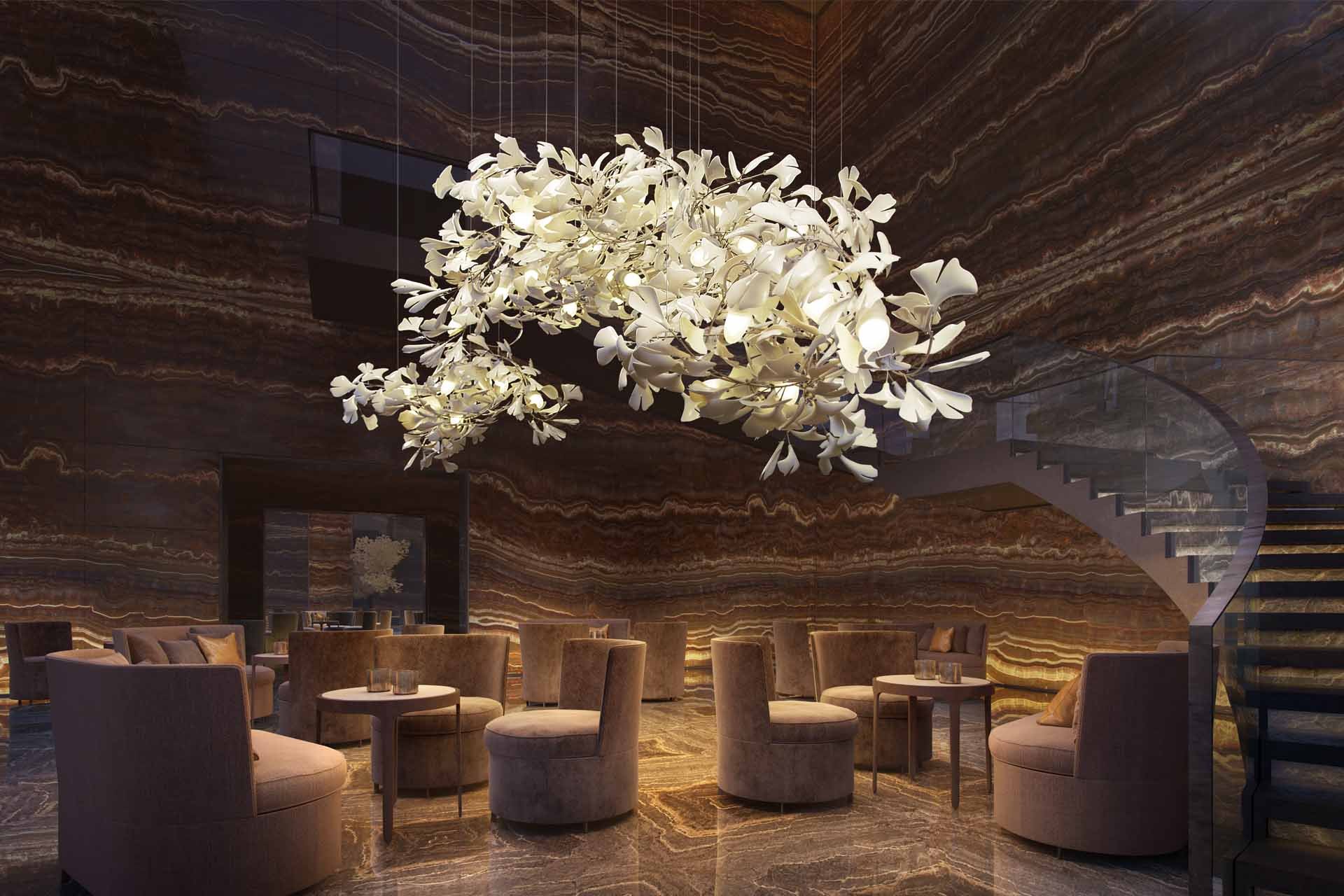
What is your biggest installation to date, or the one that left you feeling the most accomplished?
One of my most technically complex pieces is Nimbus, a cloud-like sculpture with hundreds of hand-crafted porcelain leaves for a private residence in London. Another proud milestone was my large-scale public installation in New York, which has around 155 porcelain leaves, some finished in gold. Both projects pushed me and my team to balance delicate craft with bold engineering, and seeing them come to life was incredibly fulfilling.
Could you walk us through the journey from concept to completed installation?
Every piece starts with an idea, often sparked by a shadow, a pattern of light, or a texture in nature. I sketch, then shape each porcelain element by hand. The firing process demands patience because porcelain can be so temperamental. Once everything is ready, we assemble the pieces and test how they interact with light. The final installation is about precision and making sure it appears to float naturally in the space.
Why porcelain – more specifically, why fine bone china? What does it offer that other materials don’t?
Porcelain’s translucency is like nothing else. Fine bone china lets light filter through in a way that feels alive, soft and warm. It’s also one of the most challenging materials to work with, which keeps me humble and always learning. Each leaf or petal ends up with its character, and that’s what makes it feel real.
Are there any challenges or surprises that come with working so intricately with light and porcelain?
Definitely. Porcelain has a mind of its own. Pieces can crack or change shape in the kiln even when you think you’ve done everything right. Then there’s the engineering side, making sure all the wiring and support stay hidden, so the sculpture looks like it’s grown there naturally. It’s always a balance of fragility and precision.
You’ve said your work aims to evoke “the joy and serenity of being in nature.” How do you measure whether you’ve succeeded in that goal?
I know I’ve succeeded when someone stands beneath a piece and feels a bit lighter, as if they’re part of a forest or a dream. That quiet moment means everything to me.
How much input do clients have when commissioning a bespoke piece?
Every commission is a conversation. I listen carefully to what a client wants to feel in their space, but I always stay true to the organic nature of my work. It’s about finding the right balance, so the piece feels alive and at home.
Are there any dream spaces – museums, public areas, or buildings – that you would love to create an installation for?
A boutique hotel in Paris, especially in a restored 19th-century building, is a dream of mine. I’d also love to create larger pieces for botanical gardens or museums, places where people already go to feel inspired and connected with nature.
You mention pushing the boundaries of material and technology. Can you share any recent explorations in that area?
My team and I are always refining how we combine modern engineering with the handmade spirit of the work. Lately, we’ve been experimenting with lighting that shifts with the time of day or mood. But it’s important that the technology never overshadows the organic soul of each piece.
What does a typical day in your studio look like?
My studio is my sanctuary. A day might start with sketching or testing new forms. I spend hours shaping porcelain leaves and petals by hand alongside my team of designers and engineers. Some days are all creative flow, others are about solving practical problems. I love that balance.
How do you stay creatively energised in your work and avoid repetition?
Nature never repeats itself, so I try not to either. When my ideas feel too predictable, I go back to observing. A simple walk outside can completely reset my mind. I also welcome mistakes; they often lead me in new directions.
If you weren’t working in lighting, where else do you think you’d be?
I’d still be working with my hands, probably sculpting on a larger scale or creating land art that interacts with nature. Whatever it would be, it would have to honour the same sense of wonder I find in light and porcelain.
What’s next for you creatively? Any upcoming projects or shifts in direction?
I’m working on a new series inspired by how water moves and how light plays through it. I’m also dreaming of larger outdoor installations that feel like you’re stepping into a living sculpture. There’s still so much to explore with porcelain, light and nature. I feel like I’m only at the beginning.


